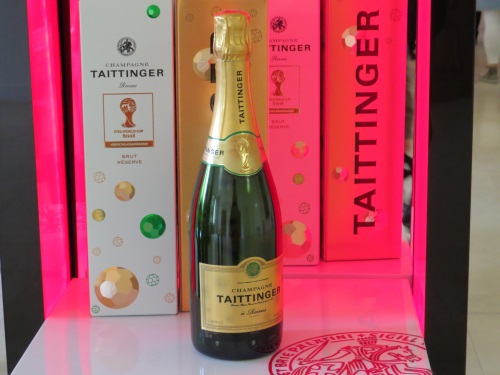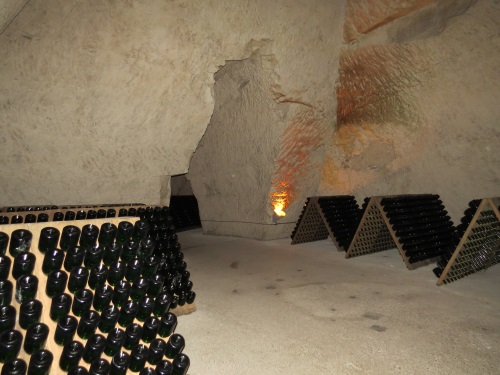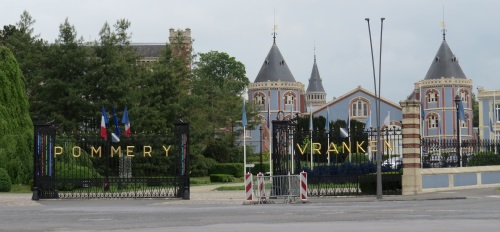Champagne Hillsides, Houses and Cellars is another candidate for inclusion this year. And it's another serial nomination: it comprises 14 locations in the Champagne-Ardenne region in the North East of France. On my way to the WHS of Vézélay and the Abbey of Fontenay, I spent Ascension Thursday in Reims to check out a couple of these Champagne sites.
 |
I rarely drink alcohol, so all these wine-related (T)WHS are a particular chore for me to tick off. Fortunately this nomination focuses more on the industrial and commercial process of champagne production than on endless hillside vineyards. With this cleverly chosen angle of argumentation, I believe the Champagne sites also distinguish themselves enough to warrant WH status. The sites are presented as a continuing evolved cultural landscape too, which for sure must please some of the jurors. And to top it off, these sites (or at least their products) are globally known: "The outstanding nature of Champagne also lies in its symbolic aspect, shared across the world".
Among the special features of this WHS are the Cellars: underground chalk chambers that hold the bottles of champagne until the contents are ready to be consumed. You can visit the cellars on a tour of one of the Champagne Houses. They all seem to do tours, as a form of publicity or way to earn something extra. I choose to visit
Taittinger in the champagne quarter of Reims. This is the only one of the major houses that offers tours without prebooking. I arrived around 11 a.m., and was able to directly join a tour in English. There were about 25 other participants from all over the globe, so these tours seem to be quite popular. Cost was 16.5 EUR including one glass of champagne.
 |
| Underground storage of Taittinger |
The Taittinger cellars are located on the site of the basement of the old Saint-Nicaise abbey and in former chalk quarries. The tour both shows the remains of the abbey and the champagne production process. Endless rows of champagne bottles line the 4km long hallways: they stay there for up to 8 years until the
delicate process is finished. There are two fermentation stages, and the characteristic cork is only added at the end. The temperature in the chalk chambers is a constant 12 degrees Celsius.
Another subsite in Reims that is part of the nomination is Saint-Nicaise Hill. This is an area with large public spaces and parks, dotted with industrial buildings that belong to the champagne production process. There even is a 'Champagne Park' - a vast public park where locals go for a picknick or a run. It was created as an area for employees of the Pommery Champagne House to practice sport. The buildings, according to the nomination dossier, "also play a representative role, helping to win over clients". Also, "a number of patrician residences occupied by the heads of the Champagne Houses" can be found here. The most striking of the former is the seat of
Vranken Pommery, a complex that oozes luxury and quirkiness. You can walk the grounds freely, and amaze yourself at for example the flashy blue pine trees in the front garden.
 |
| Impressive entrance to Vranken Pommery |
The popularity of the drink owes a lot to the
marketing strategy of the Champagne Houses, which since the late 19th century promoted the wine's image as something worthy for royals and as such to be aspired by the middle classes. It seems that the marketing has worked magic again on the ICOMOS and UNESCO committee members.